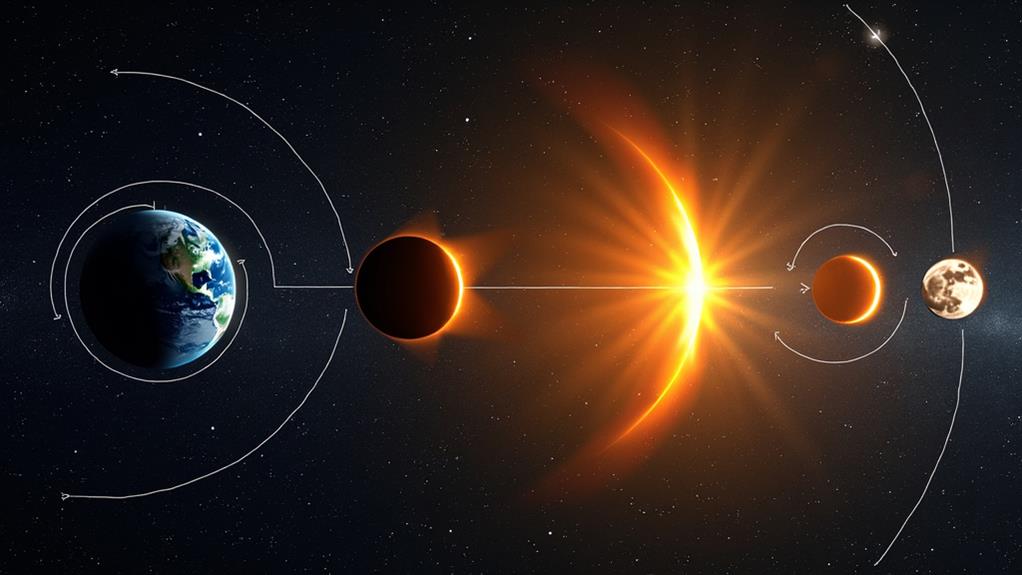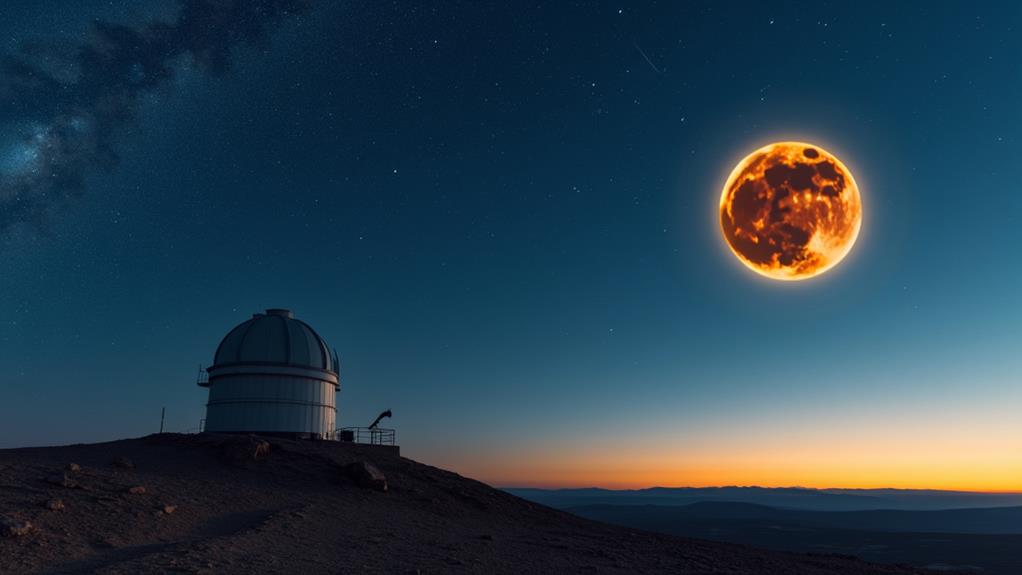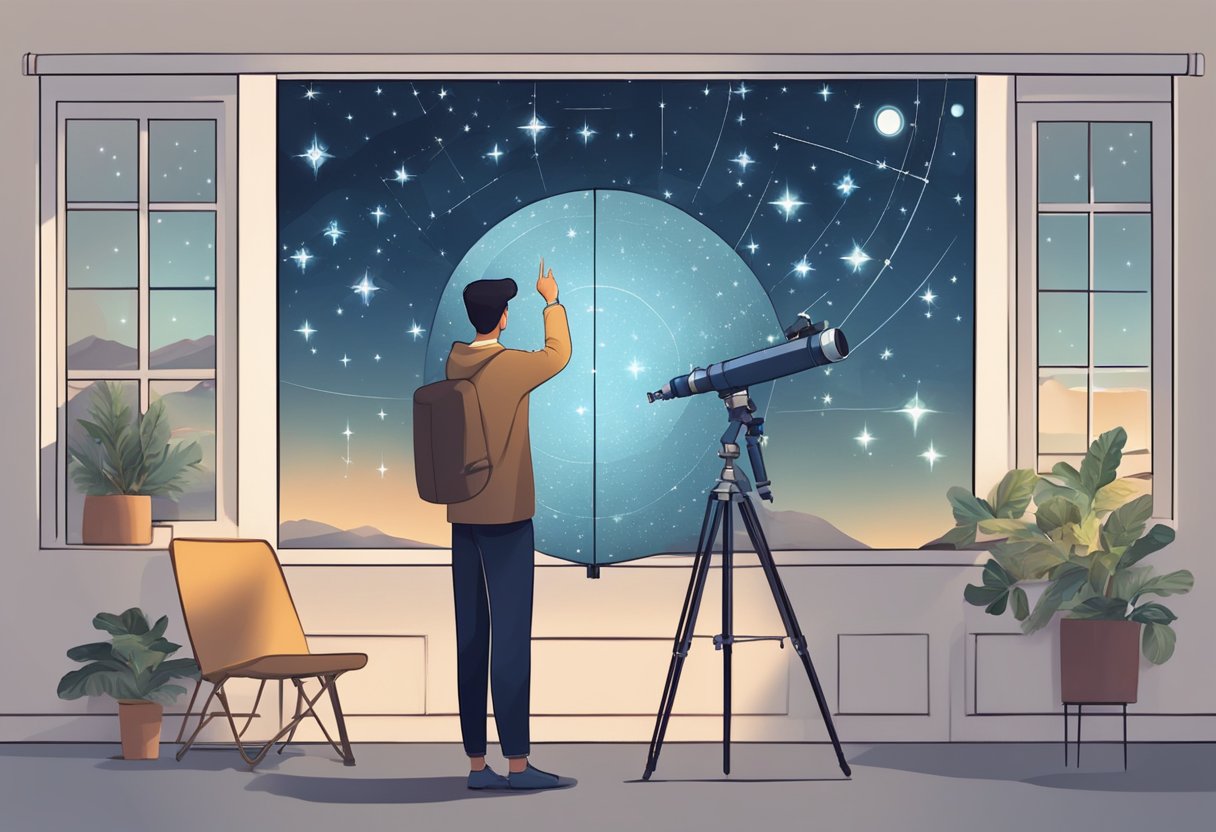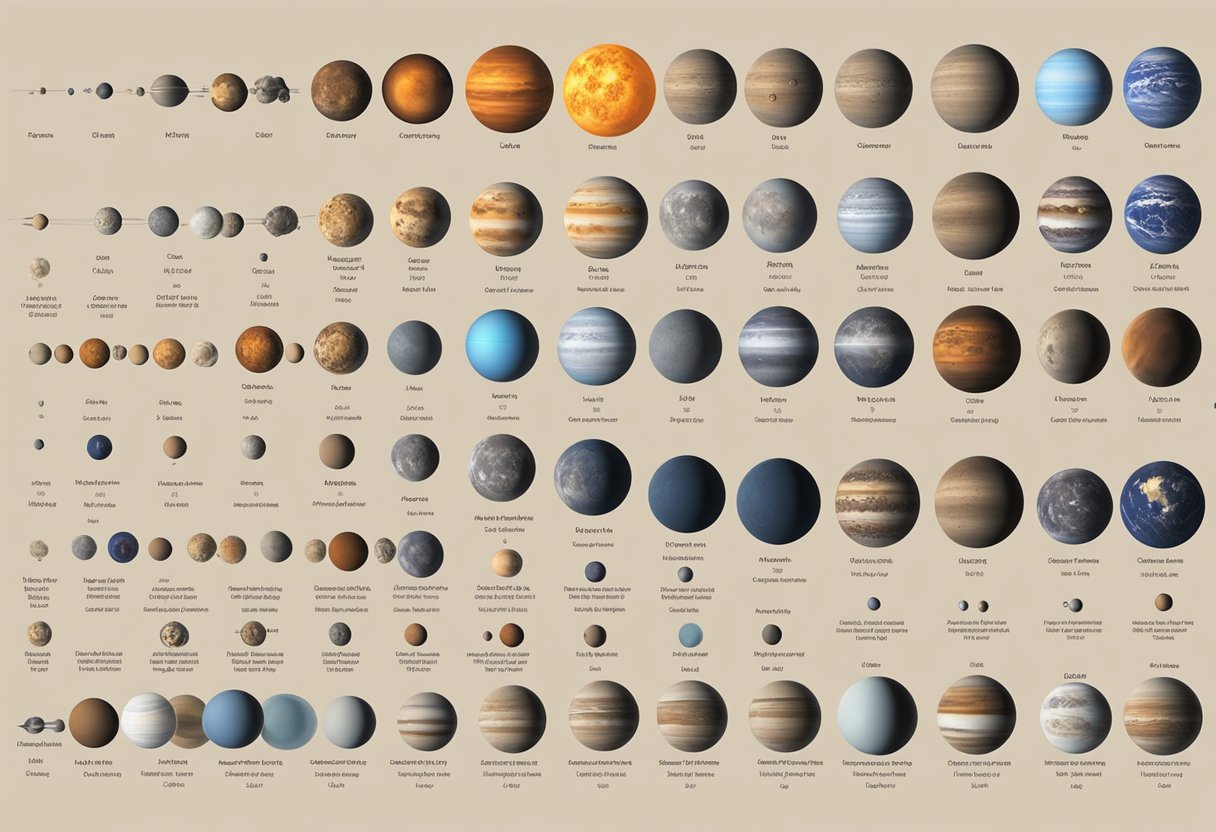Complete Guide to Safe Solar Eclipse Viewing
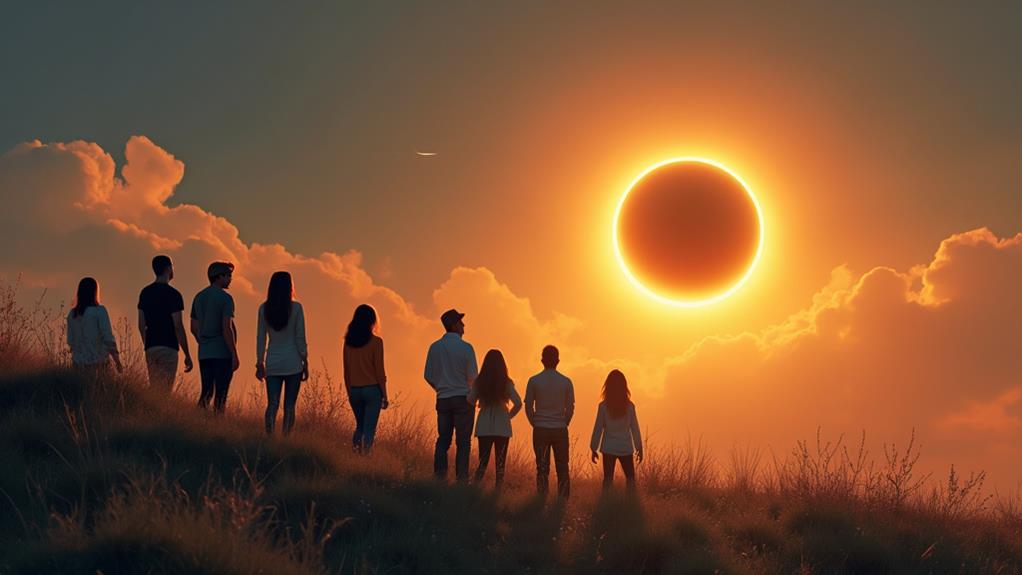
To view a solar eclipse safely, you need the right gear and precautions. Always use eclipse glasses meeting ISO 12312-2 standards and inspect them for damage. Never look directly at the Sun without proper protection, except during the brief totality phase of a total eclipse. For partial eclipses, consider indirect methods like pinhole projectors. Regular sunglasses are inadequate. Apply sunscreen and wear protective clothing to guard your skin. Equip cameras and telescopes with solar filters. Anything less could harm your eyes or skin, but with the right steps, you'll enjoy the eclipse without worry. Uncover extensive guidance to guarantee your safety.
Key Takeaways
- Always use ISO 12312-2 compliant eclipse glasses to safely view solar eclipses.
- Directly view the Sun only during the totality phase of a total eclipse.
- Inspect eclipse glasses for damage before use and discard if scratched or torn.
- Employ indirect viewing methods like pinhole projectors for partial eclipses.
- Use proper solar filters for cameras and telescopes to prevent eye damage.
Understanding Solar Eclipses
A solar eclipse happens when the Moon moves directly between the Earth and the Sun, blocking all or part of the Sun's light from reaching our planet. There are three main types of solar eclipses: partial, total, and annular. The total solar eclipse is the rarest and most dramatic, as the Moon completely covers the Sun, casting a shadow on Earth.
During the total solar eclipse, you'll experience the totality phase, which lasts between 2 to 4 minutes. This phenomenon can only be fully appreciated if you're within the path of totality, a narrow band where the full eclipse is visible. Outside this path, you'll observe the partial eclipse phases, where the Moon only covers part of the Sun.
For safe solar viewing, always use eclipse glasses or safe solar viewing glasses. These specialized glasses are vital for protecting your eyes while viewing the eclipse. The next notable solar eclipse will occur on April 8, 2024, and will be visible across nearly all of North America. Regardless of whether you're witnessing a total, partial, or annular solar eclipse, understanding the phases of a solar eclipse and following safety information is critical.
Essential Eye Safety
Caring for your eyes during a solar eclipse is crucial. Direct viewing of the Sun can cause severe eye injuries, so using specialized eye protection is vital. Eclipse glasses that meet the ISO 12312-2 standard are a must for safe viewing. Always inspect your eclipse glasses for any scratches or tears before use, as damaged glasses won't protect your eyes effectively.
During a partial eclipse, you need to wear eclipse glasses or use handheld solar viewers at all times. There's no safe direct viewing without proper eye protection. Even a brief glance at the Sun can cause serious damage. Remember, the only time it's safe to view the Sun directly is during the totality phase of a total solar eclipse, and this lasts only a few minutes. Once totality ends, immediately put your eclipse glasses back on.
If you're using optical devices like cameras or telescopes, verify they have proper solar filters. Eclipse glasses alone aren't sufficient for safe viewing through such equipment. Prioritize your eye safety by using the correct gear and following these guidelines to enjoy a safe solar eclipse experience.
Safe Viewing for Partial Eclipses
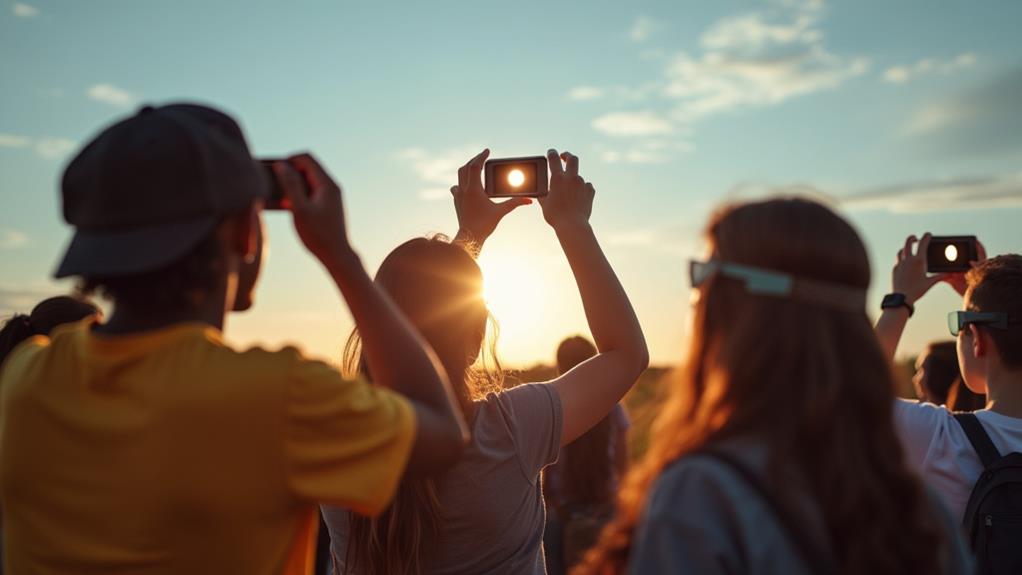
When viewing a partial solar eclipse, it's crucial to prioritize eye safety by using ISO 12312-2 compliant eclipse glasses or handheld solar viewers. These specialized solar viewing equipment are designed to filter out harmful rays, preventing serious eye injuries. Ordinary sunglasses and homemade filters are not safe and should never be used.
For added safety, you can opt for indirect viewing methods. Pinhole projectors are a simple and effective way to watch the partial solar eclipse without looking directly at the Sun. You can even use household items like colanders to create a similar effect. These methods are particularly useful if you don't have access to eclipse glasses or safe solar viewers.
If you're watching with children, be certain to supervise them closely. Kids are naturally curious and might accidentally look at the Sun without proper protection, risking serious eye damage. Verify they use solar filters correctly and consistently.
Safe Viewing for Total Eclipses
Viewing a total solar eclipse can be a breathtaking experience, but it demands strict adherence to safety protocols to protect your eyes. During the partial phases before and after the totality phase, you must wear eclipse glasses or use solar viewers to shield your eyes from harmful solar radiation. These glasses must comply with the ISO 12312-2 safety standard to confirm they provide adequate protection.
The only safe time to view the Sun directly without protection is during the totality phase, which typically lasts between 2 to 4 minutes. As soon as any part of the Sun re-emerges, put your eclipse glasses back on immediately to prevent eye damage. Always inspect your glasses for scratches or damage before use, and discard any damaged glasses.
To guarantee everyone's safety, especially younger viewers, it's essential to supervise children closely. Make sure they understand and follow the safety guidelines and keep their protective equipment on at all necessary times. Proper supervision helps assure that everyone can enjoy the awe-inspiring event of a total solar eclipse without risking their eyesight. Remember, vigilance and proper equipment are key to a safe and memorable experience.
Skin Protection Tips
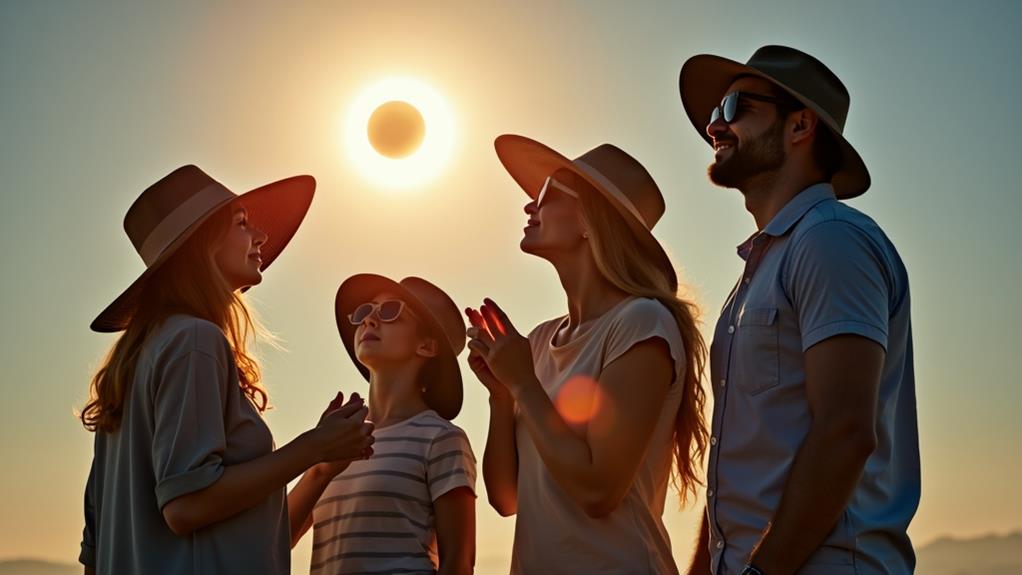
During a solar eclipse, protecting your skin from the Sun's intense rays is vital. To guarantee effective skin protection, apply a broad-spectrum sunscreen with an SPF of 30 or higher to all exposed skin. This type of sunscreen shields you from both UVA and UVB rays, greatly reducing the risk of skin damage and sunburn. Remember to reapply sunscreen every two hours or more frequently if you're sweating or swimming.
Wearing protective clothing is another fundamental step. Opt for long sleeves, pants, and wide-brimmed hats to cover as much skin as possible. This not only minimizes UV exposure but also keeps you cooler during eclipse viewing.
Seeking shade is similarly significant, especially during partial or annular eclipses, when the sun's rays can still be quite strong. Position yourself under trees, umbrellas, or any available shade to reduce direct sun exposure.
Don't forget about your lips—they're vulnerable to sunburn too. Use a lip balm with SPF to keep them protected. By following these skin protection tips during your eclipse viewing, you can enjoy the event without worrying about skin damage.
Recommended Viewing Equipment
Aside from protecting your skin, confirming you have the right viewing equipment is key to safely enjoying a solar eclipse. The primary crucial item is eclipse glasses. Make certain they meet the ISO 12312-2 safety standard and are free from scratches or damage. These glasses are designed to block harmful solar rays, allowing you to view the eclipse safely.
Solar viewers are another excellent choice. These handheld devices are specifically made for solar observation, providing adequate protection. If you prefer indirect viewing, you can create a simple pinhole projector using cardboard and aluminum foil. This method is safe and effective, as it allows you to see the eclipse without looking directly at the Sun.
For those using telescopes or cameras, always attach proper solar filters securely. Never use standard optical filters, as they don't offer sufficient protection. If you opt for welder's glass, verify it has a minimum shade of 14. This level of shading is necessary to protect your eyes from the Sun's intense brightness.
Additional Safety Resources
When preparing to view a solar eclipse, having access to reliable safety resources is vital. NASA's official website is a wealth of information, offering extensive safety guidelines and resources to guarantee you're well-informed about protective measures and best practices. It's an excellent starting point for understanding the risks and how to mitigate them.
The American Astronomical Society provides a list of reputable suppliers for solar eclipse glasses and safe solar viewers that meet the ISO 12312-2 safety standard. This helps you avoid counterfeit products that may not offer adequate eye protection for solar viewing.
Local community programs often host safe eclipse viewing events. These gatherings provide access to expert guidance and equipment, making it easier to experience the phenomenon safely. Furthermore, educational workshops and demonstrations at local planetariums and science centers can teach you proper viewing techniques and improve your understanding of solar eclipses.
Organizations like Prevent Blindness offer valuable eye safety tips. They emphasize the importance of using proper eye protection, such as certified solar eclipse glasses, to prevent serious eye damage.
- NASA safety guidelines
- Reputable suppliers of solar eclipse glasses
- Community programs for safe viewing
- Educational workshops at planetariums
- Eye safety tips from Prevent Blindness
Frequently Asked Questions
How Do I Make My Solar Eclipse Viewer Safe?
By Jove, guarantee your DIY viewer prioritizes eclipse safety. Use solar filters, not myths like CDs. Create pinhole projectors with a small hole in cardboard, projecting the Sun onto another surface. For safe astronomy, always supervise children and use proper viewing techniques. Organize viewing parties to educate others about eye protection and solar phenomena. Remember, never look directly at the Sun without certified filters to avoid damage.
What Is the Safest Way to Watch a Solar Eclipse?
To guarantee eclipse safety, always use protective eyewear that meets ISO standards. Solar filters are essential for eclipse photography techniques. For indirect viewing, create pinhole projectors. Engage in educational activities about historical eclipses and solar phenomenon effects. Community viewing events can offer safe, shared experiences. Remember, protective eyewear standards are vital. Supervise children and verify any optical devices have proper solar filters. Enjoy the awe-inspiring event safely!
How to Safely View Solar Eclipse 2024?
To safely view the 2024 solar eclipse, use ISO 12312-2 compliant solar filters or eclipse glasses. Monitor the eclipse timing closely since totality is brief. Consider pinhole projectors if you lack direct eye protection. For eclipse photography, use proper filters. Choose ideal viewing locations affected by climate effects. Historical eclipses remind us of safety regulations. Don't fall for eclipse myths—protect your eyes diligently to enjoy this celestial event.
How to Make Sure Eclipse Glasses Are Safe?
Regarding eclipse glasses, your eyes' safety is paramount. Confirm they meet the ISO standards importance for proper certification. Beware of counterfeit glasses warning; always buy from reputable sources. Regularly inspect for damage, as even tiny flaws can be risky. Teach kids safe viewing techniques. Remember, eclipse glasses expiration matters too. Avoid DIY eclipse viewers and ordinary sunglasses. Follow proper usage instructions for all solar filter options to assure safe viewing.

